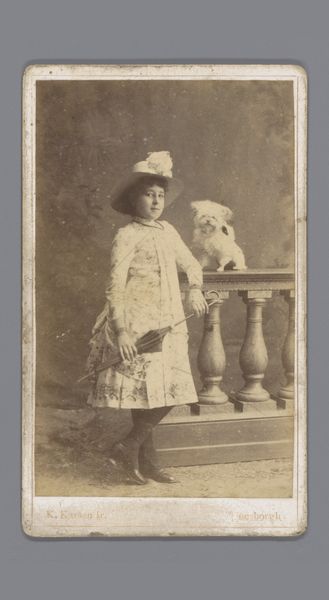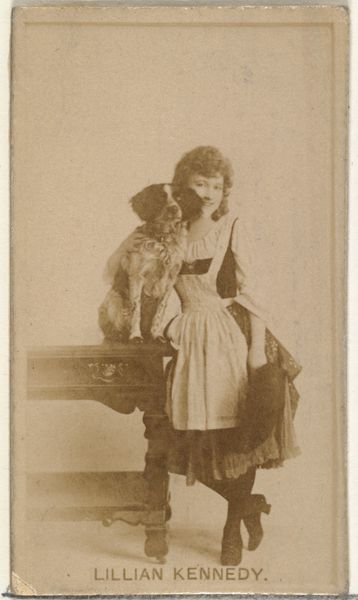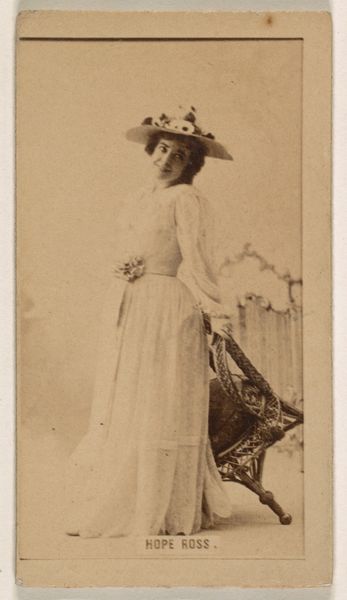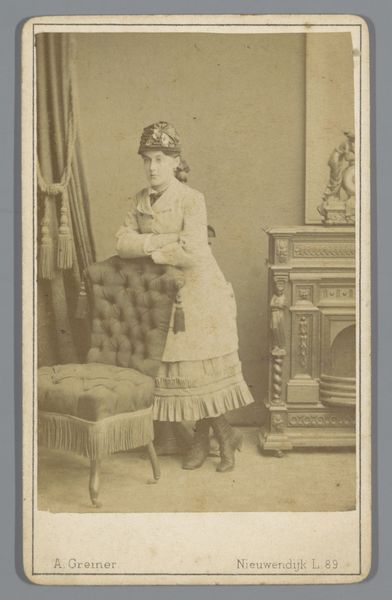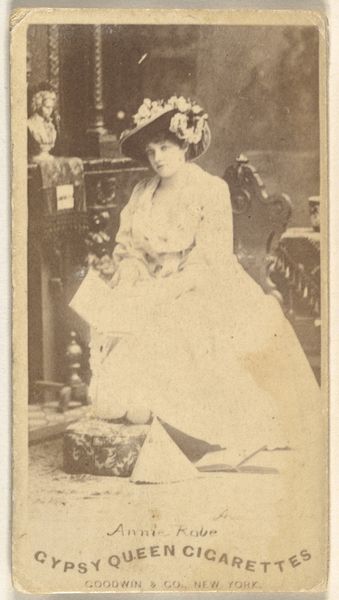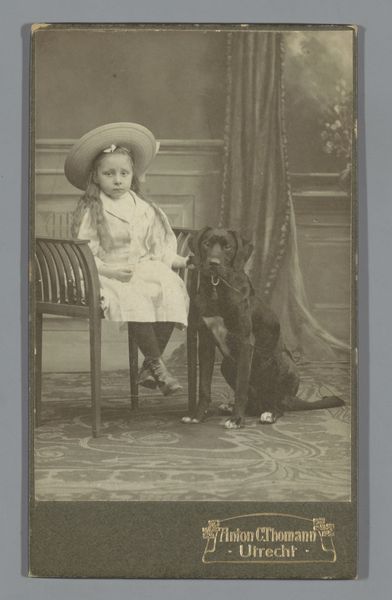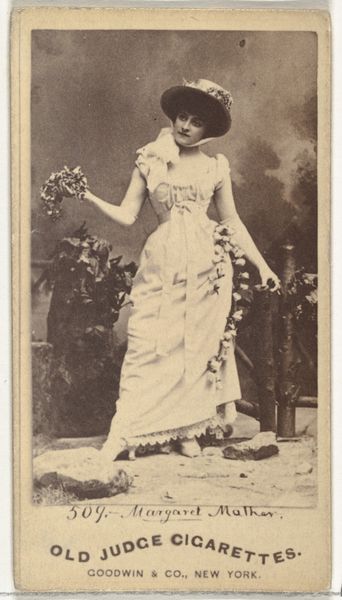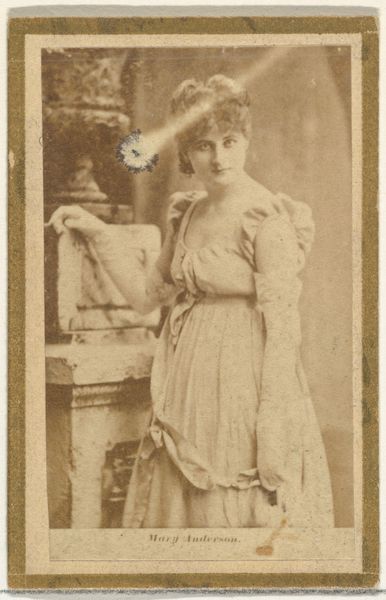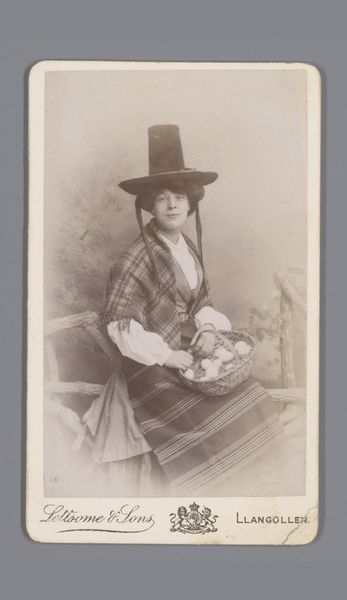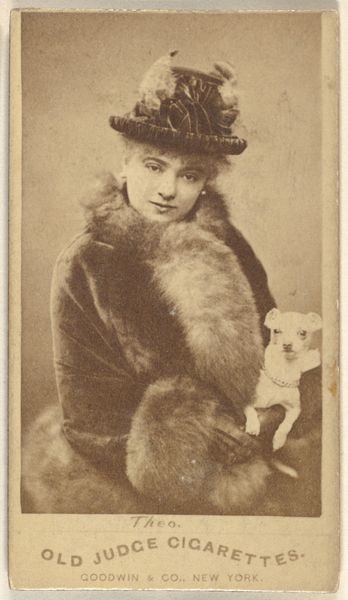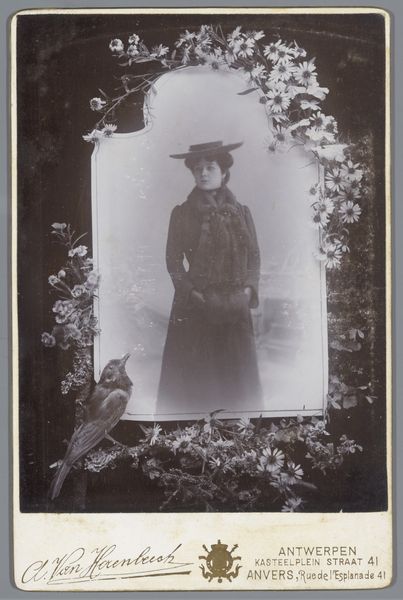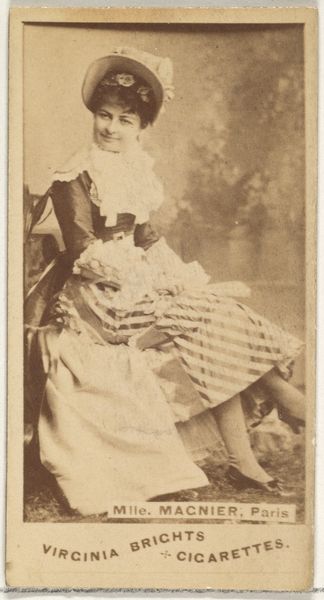
Dimensions: height 167 mm, width 108 mm
Copyright: Rijks Museum: Open Domain
Curator: This is a delightful albumen print from 1889, titled "Portrait of Princess Wilhelmina with her Dog." It’s currently held at the Rijksmuseum. What strikes you about it initially? Editor: There’s a hazy, dreamlike quality. The tones are very muted, almost sepia-toned. It feels like stepping into a memory. The textures – the dress, the fur of the dog, the hat – it all feels so tactile, despite the distance. Curator: Absolutely. As an albumen print, the image’s creation involved coating paper with egg white before applying a light-sensitive silver nitrate solution. It’s fascinating how this laborious process translated photography into a form accessible to the bourgeois classes, who aspired to emulate the style of royal portraiture during a time of considerable societal change. Photography democratized this sort of imagery. Editor: True. And in terms of the formal composition, the young princess is positioned very centrally, commanding the viewer’s attention. Her dress is almost blindingly white in contrast to the backdrop, a rather simple construction to convey high status. How might this composition inform its reading, historically? Curator: Well, think about Wilhelmina’s future. At the time, she was heir presumptive, a tiny symbol of national stability. Her very image becomes a commodity, a carefully constructed visual of innocence and strength. The photograph becomes part of building her public image as a strong Dutch monarch, even at such a young age. The dog, obviously, serves as a signifier of loyalty and status. Editor: It certainly speaks of social decorum. But looking at this photograph from a purely aesthetic perspective, it exemplifies a sense of harmony and balance. The muted palette helps unify the disparate elements—her dress, the dog's fur, the staged background landscape—into a singular atmospheric tableau. There's a soft diffusion in light throughout. Even the artist's logo embossed in gold becomes a formal part of the picture itself. Curator: It's interesting how a photographic process designed to be repeatable becomes individualized by these unique choices. Editor: Precisely. This artwork manages to transcend mere reproduction. I really notice how the overall tone produces a soft sense of nostalgia; that golden hue transforms its material value to a cultural one, resonating with the themes of childhood and a regal coming-of-age. Curator: I find myself thinking about the labor and intention embedded in the material conditions through which an image of national identity emerges from craft to high art, reflecting an increasingly commercialized industry catering to notions of idealized representation. Editor: All this informs how such pieces operate on so many intersecting planes of meaning!
Comments
No comments
Be the first to comment and join the conversation on the ultimate creative platform.
